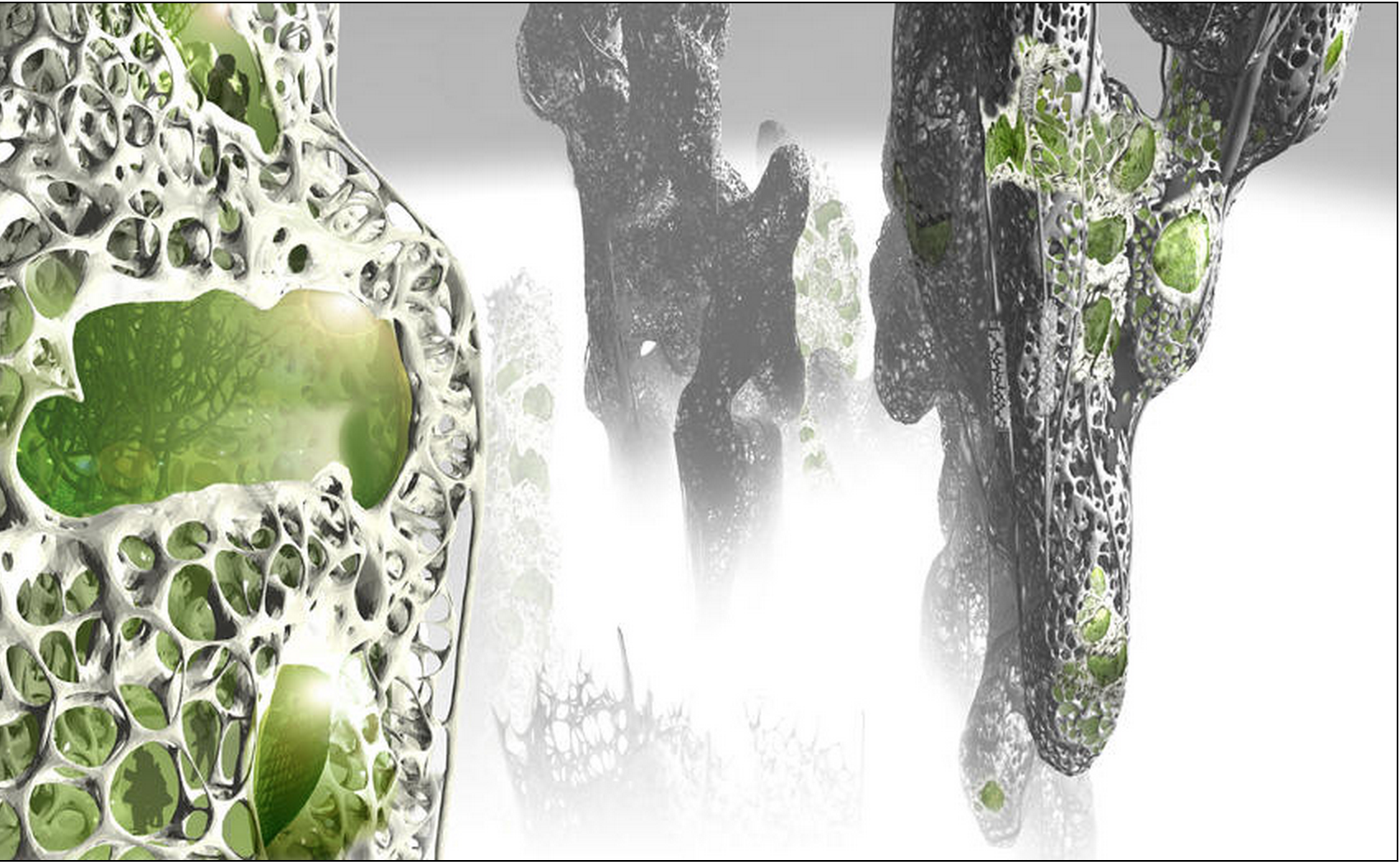Domain Refined:
1. Architecture
- Building at the large-scale
- Relating space to culture/philosophy/geopolitics – the future of society
- Building in the age of the anthropocene
2. Digital Fabrication
- 3D modeling
- Parametric Design
- Computational Simulations
- Robotic building
3. Biological Fabrication
- Materials investigations
- Living systems (silk worms, fungi, algea)
Synthesis:
I am studying digital and biological fabrication because I want to find out how to build at the architectural scale using alternatives materials and computational techniques in order to understand better methods of living in the age of the anthropocene.
Note from the 2015 Acadia Conference:
“Computational Ecologies: Design in the Anthropocene, seeks to expand the topic of environmental discourse beyond purely practical issues of “performance” as a general means of engaging experimental contemporary design that explores aesthetic, conceptual, and even philosophical levels as well. In the context of such work, the discipline of architecture, conceived as both a technological and a cultural endeavor, becomes immersed in a much broader geophilosophical debate regarding the future of society and by extension the built environment in the age of the Anthropocene.”
Questions:
1. What living organism is best suited for this research? Will using silk worms be feasible? Where will I do it? If I use Silk Worms, how will the project differ from Silk Worm Pavilion? Are there other living organisms/systems that are better suited for the project, like bacteria? How could bacteria be implemented as a building material?
2. Are you thinking too literally about using living systems in building? Is there something else that living systems can tell us about our built environment? Think about Alisa Andrasek’s project modeling electromagnetic flows and how applying those flows can effect the actual thermodynamics of a building. What other phenomenon could you think to model that might convey a similar idea without going through the pains of lab cultivation?
3. What geometry is going to best relay your concept? Can you write an Open Frameworks add-on that helps you to create parametric shapes and could help you narrow in on a shape that works? Perhaps, as a series of more directed experiments, you could write a software and 3D print these shapes using high quality printing and experimenting with other materials (metal, paper)? Using Biothing as a reference and precedent, is ther a natural phenomenon that you could model mathematically and begin to narrow in on a shape that is connected to your concept (fractal universe) and visually compelling?
4. Building at the large scale will be challenging. What space will you use? How will you be able to accomplish this component? Can you research how other people install/construct large scale works?
5. What specifically are you trying to say about The Age of the Anthropocene? What research question/social problem are you trying to convey? How can you create a piece that becomes a critical design? Looking at Hypnosis Room, how can the built environment help tell a story and convey a message? How can a “sculpture” evoke emotion and instill impact?
Central Characteristics/Adjectives:
Geometrical – Mathematical
Biological – Inspired by nature – Natural systems
Fluid – Flowing – Moving while still
Cellular Automata
Fractal – Patterned
For prototype II I wanted to continue to play with form and to begin to bring those forms to life digitally. I am beginning now to explore digital fabrication and the process of making physical objects through computational modeling. I wanted to hone in a bit more on the geometrical aesthetic. I also wanted to experiment with modeling geometries and work a bit with Rhino/3D modeling software to try 3D printing.
Experiment I: Parabolic model // OpenFrameworks
Experiment II: Spherical model // OpenFrameworks
Experiment III: Geodesic Dome // Rhinoceros
Experiment IV: Rotegrity Sphere // OpenFrameworks
Rotegrity Sphere in Rhinoceros (courtesy of Terreform One)
























